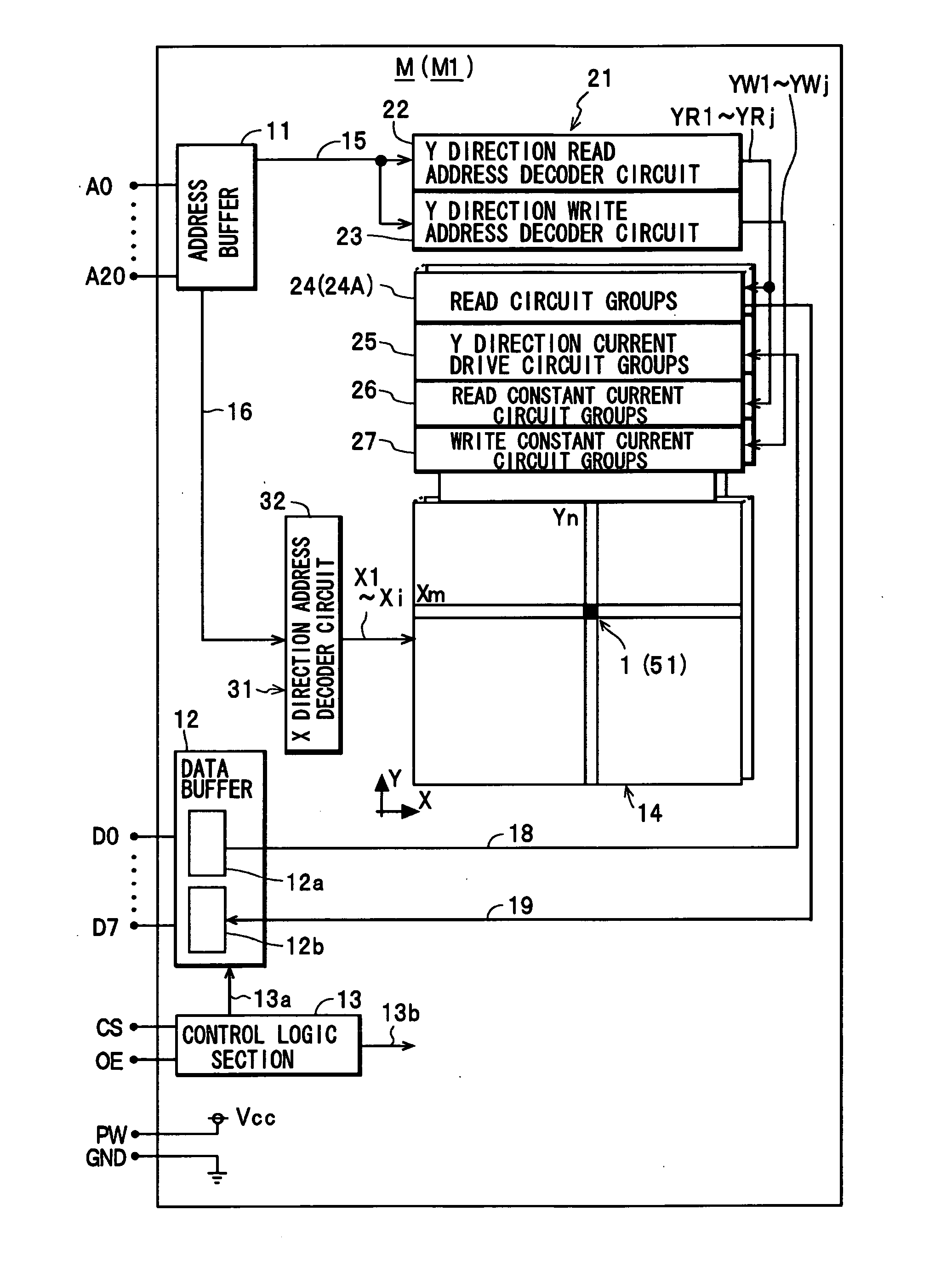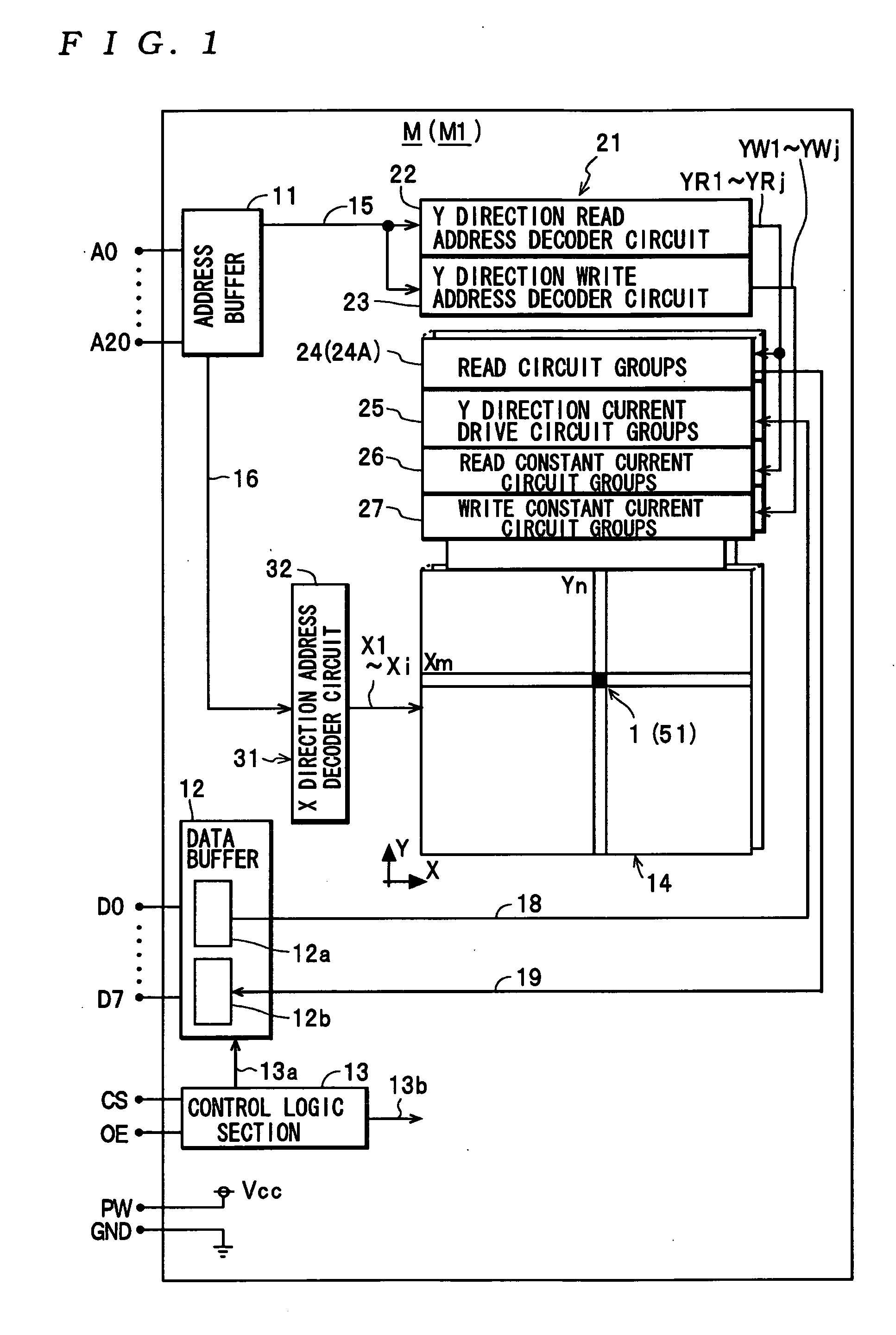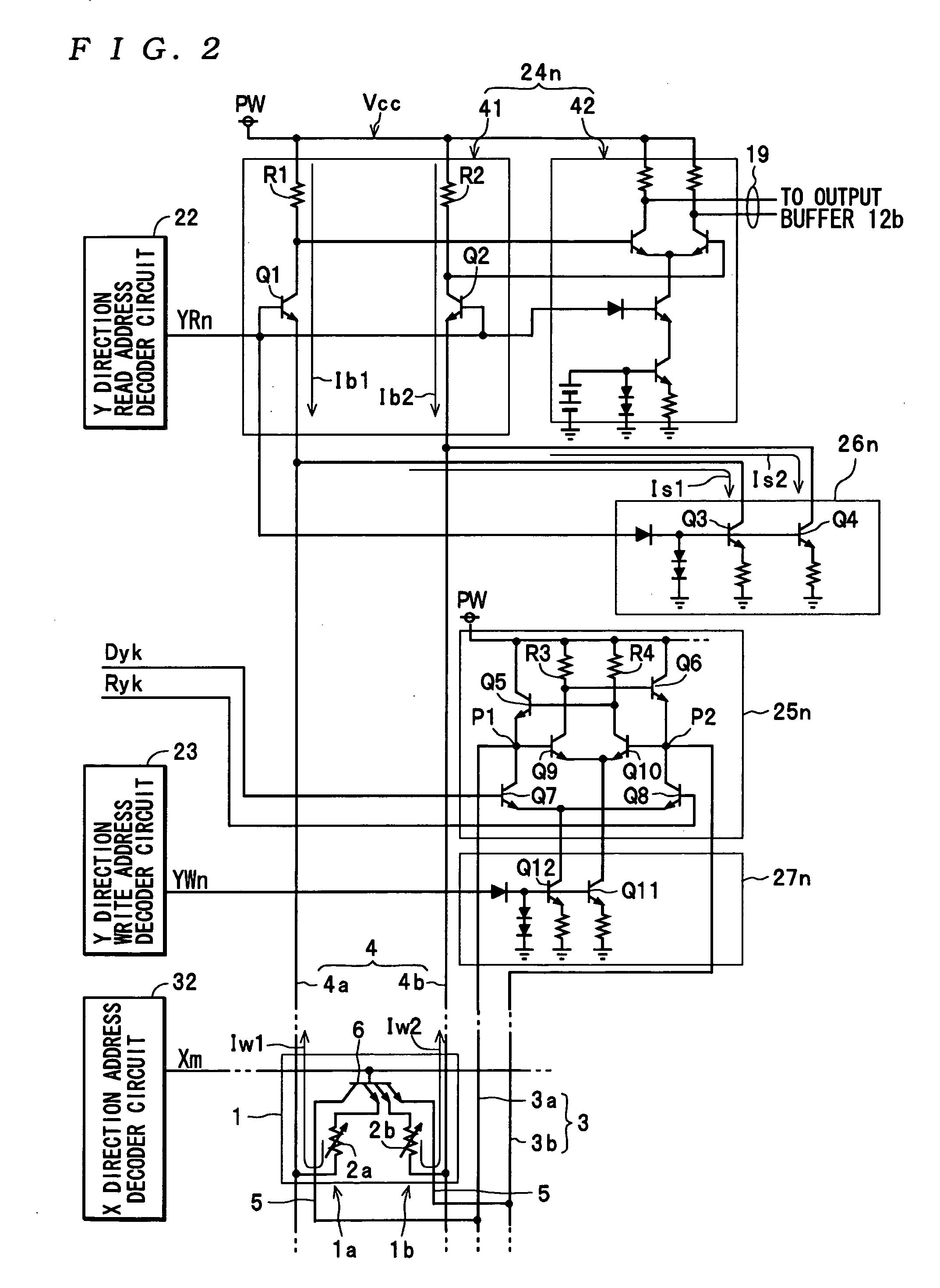Magnetic memory device
a magnetic memory and memory cell technology, applied in the field of magnetic memory devices, can solve the problems of difficult to further reduce the size of the memory cell and the magnetic memory devi
- Summary
- Abstract
- Description
- Claims
- Application Information
AI Technical Summary
Benefits of technology
Problems solved by technology
Method used
Image
Examples
Embodiment Construction
[0026] Hereinafter, an embodiment of the present invention will be described in detail with reference to the drawings.
[0027] First of all, the construction of a magnetic memory device M according to the present embodiment will be described with reference to FIGS. 1 and 2.
[0028] As shown in FIG. 1, the magnetic memory device M is comprised of an address buffer 11, a data buffer 12, a control logic section 13, memory cell groups 14, a Y direction drive control circuit section 21, and an X direction drive control circuit section 31. In this case, the Y direction drive control circuit section 21 includes a Y direction read address decoder circuit 22, a Y direction write address decoder circuit 23, read circuit groups 24, Y direction current drive circuit groups 25, read constant current circuit groups 26, and write constant current circuit groups 27. On the other hand, the X direction drive control circuit section 31 has an X direction address decoder circuit 32. Further, as to the me...
PUM
 Login to view more
Login to view more Abstract
Description
Claims
Application Information
 Login to view more
Login to view more - R&D Engineer
- R&D Manager
- IP Professional
- Industry Leading Data Capabilities
- Powerful AI technology
- Patent DNA Extraction
Browse by: Latest US Patents, China's latest patents, Technical Efficacy Thesaurus, Application Domain, Technology Topic.
© 2024 PatSnap. All rights reserved.Legal|Privacy policy|Modern Slavery Act Transparency Statement|Sitemap



